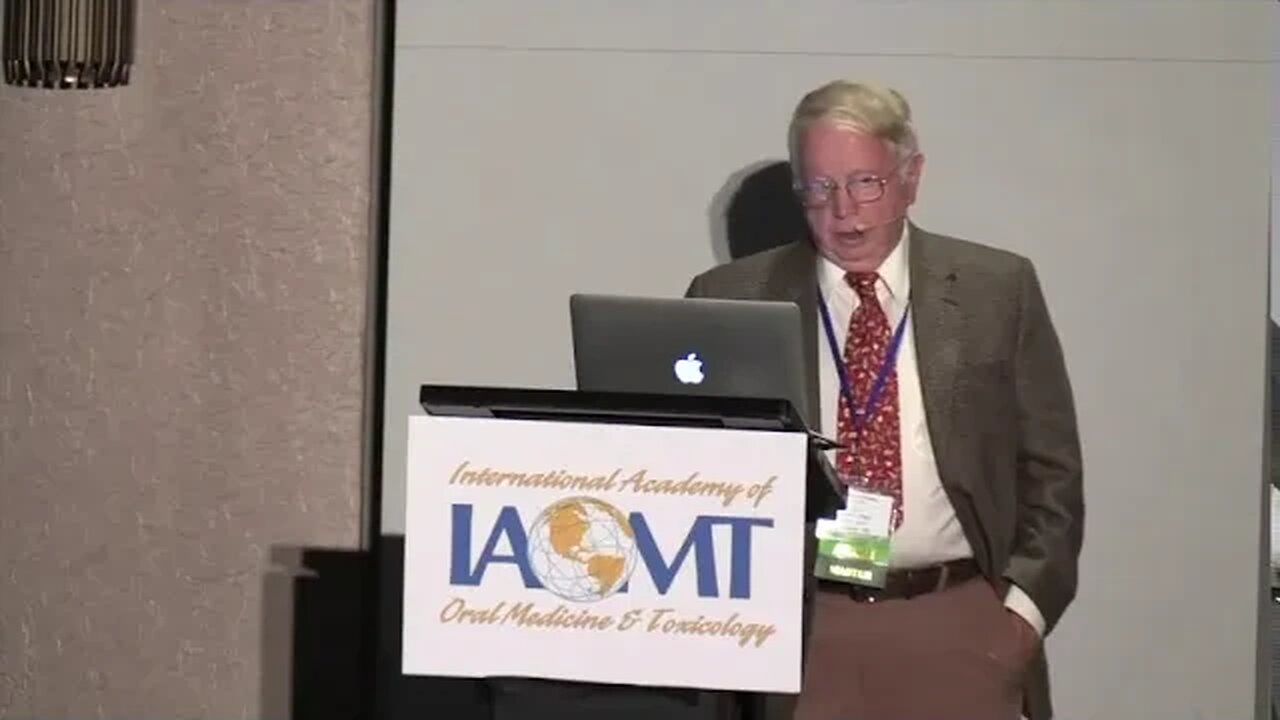Premium Only Content

Reduced Glutathione in Reducing Viral Virulence | Boyd Haley, PhD
The Research Indicated Role of Reduced Glutathione in Reducing Viral Virulence | Boyd Haley, PhD
IAOMT Annual Conference in Nashville, TN
September 12, 2020
Learning Objectives:
1. Viral infections are more severe in two general human groups, the aged, and those with underlying medical issues. There has to be some biochemical explanation for this and it likely involves the role of oxidative stress. This will be addressed.
2. The major role of reduced glutathione (GSH) is to scavenge hydroxyl free radicals which convert it to oxidized glutathione (GSSG). Both of these naturally occurring molecules are capable of attaching glutathione to proteins in a process call glutathionalyation which can change the function of the protein involved. Primarily, the role of glutathionalayation in response to viral infections will be presented.
3. The biochemistry of glutathione synthesis and the effects of diet and toxins on the level of reduced glutathione will be presented.
Dr. Boyd Haley obtained his MS in Chemistry at the University of Idaho and his PhD in Chemistry/Biochemistry at Washington State University. He was appointed to be Chair and Professor of Chemistry from 1996 to 2005 at the University of Kentucky. He retired in July 2008. He has lectured throughout the world and testified before Congressional Committees and the Institute of Medicine regarding various aspects of mercury toxicity and neurological diseases. In the past 6 years he had dedicated most of his research efforts towards the development of a safe and effective chelator for mercury, lead, cadmium and other toxic metals.
Disclaimer: The information provided on this video is not intended as medical advice and
should not be interpreted as such. If you seek medical advice, please consult with a health care
professional. Also, the information in this video represents the thoughts of the individual
speaker/s, and the views expressed in this interview do not necessarily reflect the views of the
IAOMT, its individual members, its Executive Committee, its Scientific Advisory Council, its
administration, its employees, contractors, sponsors, or any other IAOMT affiliates.
-
 54:57
54:57
International Academy of Oral Medicine & Toxicology
1 year agoSimon Yu, MD., Dental and Parasites as a Missing Link for Cure of Cancer" IAOMT 2012 Minneapolis
989 -
 58:00
58:00
Donald Trump Jr.
6 hours agoBreaking News on Deadly Plane Crash, Plus Hearing on the Hill, Live with Rep Cory Mills & Sen Marsha Blackburn | TRIGGERED Ep.212
64.4K54 -
 52:03
52:03
Kimberly Guilfoyle
5 hours agoLatest Updates on Deadly Air Collision, Plus Major Hearings on Capitol Hill,Live with Marc Beckman & Steve Friend | Ep.192
37.7K21 -
 1:26:50
1:26:50
Redacted News
3 hours agoWhat happened? Trump DESTROYS the Pete Buttigieg run FAA for tragic airline crash | Redacted News
152K102 -
 43:37
43:37
Candace Show Podcast
3 hours agoThe Taylor Swift Plot Thickens | Candace Ep 142
84.2K70 -
 LIVE
LIVE
Common Threads
1 hour agoLIVE DEBATE: Trump's Wild Handling of Plane Tragedy
183 watching -
 LIVE
LIVE
LFA TV
8 hours agoConfirmation Chaos | TRUMPET DAILY 1.30.25 7pm
638 watching -
 1:57:53
1:57:53
Revenge of the Cis
5 hours agoEpisode 1437: Kash Me Outside
38K8 -
 6:34:04
6:34:04
Dr Disrespect
7 hours ago🔴LIVE - DR DISRESPECT - WARZONE - CRAZY TRIPLE THREAT CHALLENGE
131K25 -
 3:10:10
3:10:10
Power Slap
9 days agoPower Slap 11: Da Crazy Hawaiian vs Dumpling 2 | Thursday January 30th 12pET/9aPT
3.58M134